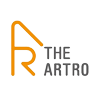Features / Focus
The Art Market in the Post-Pandemic World – An Interview with Tim Schneider
posted 11 Aug 2022
The Covid-19 crisis has heralded huge changes across every aspect of society. The pandemic amplified opportunities and changes, especially in the digital realm, and people are now paying close attention to digital transformations. The art scene particularly saw unprecedented new phenomena, such as the adoption of virtual reality (VR) exhibitions and online auctions, the activation of online viewing rooms, and the expansion of online art market platforms. Embracing its reopening in the year 2022, The Artro presents special feature to look back and reflect upon the changes that the art world has undergone over the past two years, as well as to project future prospects and outlook. To this end, interviews were conducted with seven visual art experts working in various art fields worldwide. Clara Runge (ZKM), Eunice Lee (Whitney Museum), Johann König (König Galerie), Victoria Siddall (Frieze Fairs), Tim Schneider (Artnet News), Jennifer Pratt (Artsy), Simon Fisher (Ocula) each participated in this project and discussed the transformation of the art industry since Covid-19.

Tim Schneider, Art Business Editor at Artnet News
Q. What are your thoughts on how COVID-19 has transformed the art world, and how it has affected the global art market?
A. I’ll focus on the positives here, because the negatives are poised to come up in a later answer. The pandemic helped normalize online sales to an extent that was desperately needed, particularly in the gallery sector. The major auction houses also did an admirable job of integrating online bidding into their live sales, making the proceedings more inclusive to a wider range of buyers. There have also been some encouraging developments in the area of long-term cooperation between galleries; organizations like the Gallery Climate Coalition, the International Galleries Alliance, and South South are promising examples of collaborative entities created to address problems made even more vivid during the trials of the pandemic.
Q. How do you predict the art world will change in a post-pandemic future? What changes implemented because of COVID-19 will remain, and which will revert back to how they were pre COVID-19?
A. I honestly doubt we’ll see much more than incremental change to the system as we know it in the next year. The pandemic was the type of seismic event that could have (and probably should have) pushed the art market to completely reevaluate how it does business from first principles. Very few people seem to have been interested in doing that. As a result, we’re largely back to following the same script and the same trend lines we were following in late 2019.
To build on my last answer, the COVID shutdowns seem to have permanently sped up the pace of an industry that many, if not most, participants already thought had gotten too fast-paced and overwhelming before the pandemic. Instead of phasing out the many new initiatives created to fill the void of live sales events once in-person gatherings were acceptable again—in particular, I’m thinking of the continuous procession of online viewing rooms run by galleries and art fairs, plus an auction calendar packed with more sales than pre-COVID expectations would have allowed—industry players seem to have decided to just keep these new digital initiatives going on top of all the physical events that vaccines and other treatments have allowed to return, such as in-person art fairs and biennials. I’m skeptical that piling on like this is a good thing.
Q. Also, what is the outlook for the art market in the post-pandemic world, and what should we prepare for? What is the next big challenge?
A. My sense is that the next big challenges are largely the same big challenges the industry was facing before COVID arrived. How do we reverse the winner-takes-all trend that has defined so much of the art trade since the Great Financial Crisis of 2008, or at least prevent the inequities from getting so much worse that running a small or modestly sized art business for more than a year or two becomes unsustainable? How can artists and art businesses in one region of the world build effective bridges to other regions around the globe? How can new technology and lateral thinking be used to improve the business of exhibiting, championing, and selling art? And how should the art industry respond to the growing global catastrophe of climate change?
Q. As COVID-19 amplified opportunities and challenges from a digital perspective, people are paying more attention to digital transformation. What are the possibilities for digital transformation going forward, and what preparations are required?
A. Digital technology has the power to dramatically scale up the audiences for visual art beyond what the field has ever known before. In fact, it already has! Many members of the art world are still working through what exactly that shift means, but one meaningful change that it definitely enables is this: it allows much more direct relationships to develop between artists and their fans, which continues a trend toward artist empowerment that has been accelerating throughout this generation.
We’ve only scratched the surface of what digital technology can do for artists, institutions, and the art market. NFTs and cryptocurrencies are currently getting an outsized amount of attention because of the gaudy prices paid for Beeple and a few other early-adopting crypto artists since 2021, but I’m still not convinced that the blockchain will be the most important development for the art industry 20 years from now.
My stance is that what we need to do most is to look at what tech-fluent artists have already been doing in digital centric areas for years, if not decades, as well as how related industries such as fashion, music, and film are using tech to fundamentally rethink how they engage audiences. If we’re not doing those things, we’re frankly turning our backs on the best, most interesting version of the future.
Q. What is the future of online platforms? And what are your thoughts/perspectives on NFT art?
A. So far, NFTs have been most valuable in giving artists and dealers outside of the crypto space a compelling reason to reconsider fundamental issues like resale royalties. To me, the vast majority of visual-art NFTs don’t have much value beyond that—they’re basically just JPGs or short animated GIFs that rehash aesthetics from 15 to 20 years ago—but there is a small subset of programmatic NFTs that actually leverage the technology’s novelties to raise questions, accomplish goals, or empower artists in ways that could not be achieved without smart contracts1). I wish we were paying more attention to this latter category. As for whether the art market will go back offline: I’m normally allergic to making absolute statements, but there is literally no chance of that happening without some kind of total civilizational collapse that returns us to a barter-based economy.
Q. What are some new notable industries in the field of visual arts? What are new emerging issues in the art market?
A. To me, the post-COVID reopening underscores how important it is for businesses on the for-profit side of the industry to work to reach new audiences for art, particularly younger fans and international collectors. It’s a scary thing on some level, because some of these demographics think very differently about what makes art interesting, what constitutes a desirable art experience, and what kind of relationship to art they would most like to pay for compared to what older, more familiar demographics believed. But if we don’t expand the audience for art, I don’t really see how the art market will evolve much more beyond the sale of rare, high-priced objects to a small subset of very wealthy people.
One specific sub-industry we should watch: art licensing. Artist-branded merchandise and other licensed uses of art are becoming a bigger and bigger part of the art economy whether the old guard likes it or not. (Just look at what’s happening with the Jean-Michel Basquiat estate.) Right now, there are only a few people who specialize in these areas. If I were a high-level gallery thinking about the future, I would try to get an in-house licensing expert on staff so my artists wouldn’t have to think about going to an independent specialist or a major entertainment agency to scratch this itch.
Q. What is attractive about Korean contemporary art? What’s special about it?
A. I’m always wary of making broad generalizations about what is shared by all (or at least most) artists with the same heritage, so I won’t do that here. Instead, I’ll say that what is most attractive to me about Korean art is that its diversity offers a window onto the many histories, cultures, philosophies, and challenges that have made Korea a unique and important force in the world for longer than most Westerners even realize.
Q. Is there any Korean artist you are paying attention to?
A. Nam-June Paik is one of my all-time favorites for his skill in combining sculptural forms and moving images (plus a little bit of mischief) into works that become something much greater than the sum of their parts. I also recently discovered Hyunki Park’s works in Gallery Hyundai’s booth at TEFAF New York. I felt they shared some of the same energy and soul as Paik’s. I’m hoping to discover much more if I’m able to visit Seoul this fall!
1)1) A smart contract is a self-executing contract based on a blockchain with the terms of the agreement between buyer and seller directly written into lines of program code.
Related Articles
The Art Market in the Post-Pandemic World – An Interview with Clara Runge
The Art Market in the Post-Pandemic World – An Interview with Eunice Lee
The Art Market in the Post-Pandemic World – An Interview with Johann König
The Art Market in the Post-Pandemic World – An Interview with Victoria Siddall

Tim Schneider
Tim Schneider is the Art Business Editor at Artnet News, a co-producer of the Artnet New podcast The Art Angle. His work combines nearly a decade of firsthand experiences in the gallery sector with insights gleaned from research into economics, technology, data analysis, and related subjects. In 2017 he released his first book, 'The Great Reframing: How Technology Will-and Won’t-Change the Gallery System Forever.'


